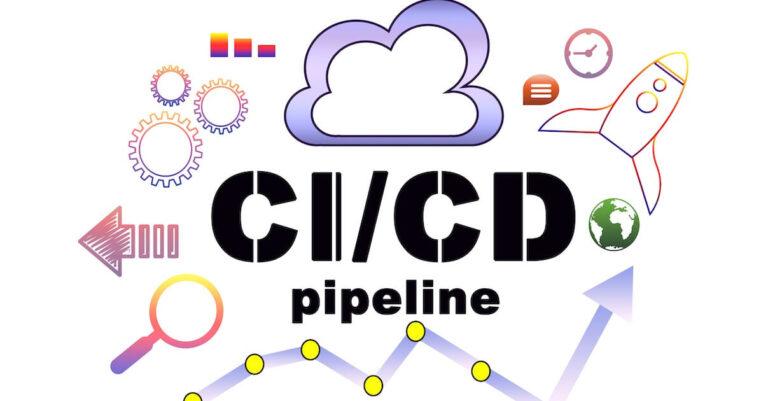With DevSecOps comes the concept of ‘moving security left,’ which does mean ‘moving testing left.’ It made QA and testing a priority through SDLC processes and made quality code or artifacts significant to maintain a sustainable CI/CD pipeline.
The earlier you can react to any potential finding, the better. But it is different with many developments and IT teams. It’s only being practiced where DevSecOps has been adopted. So the companies, which have not thought of ‘moving security left’ way, are dealing with technical debt and code quality issues. It leads to the teams slowing down, missing deadlines, and delivering brittle solutions, forcing companies to behave reactively instead of proactive and setting the root for constant fighting fires. To achieve the desired speed and responsiveness, a company needs an effective release management strategy, and that’s where DevOps Quality Gates found its place.
Implementing a quality gate is about having processes and checklists to detect possible failures and defects arising from continuous changes in the source code. There are many good reasons why quality gates should be implemented in the CI/CD cycle, including:
- A quality gate’s implementation aids in identifying sections of the code that require restructuring or simplicity.
- Early in the development cycle, a bug that eliminates the technical debt businesses build up over time can be found. It lowers the expense of future maintenance.
- It enables developers to build application code that compiles or runs without error and warns them if any problems arise, helping them avoid using poor coding standards. It aids in the overall enhancement of the code’s quality.
- It helps define project-specific rules that will afterward be automatically implemented.
What Is A Quality Gate?
Quality Gates are an essential part of modern application development practices. It is used as a checklist or gate at every stage of an SDLC. With Quality Gates practices, each artifact is reviewed and measured against certain requirements essential for the artifact to be pushed to the next phase. If an artifact doesn’t meet the checklist, it is sent back to its respective team to get it done to meet the required standards.
How Do Quality Gates Fit Into Modern Development?
A quality gate is about managing code quality and code security which is more prevalent in today’s world, where companies want speedy deployment with system stability. To add such a level of robustness to the software product, companies need to facilitate increased confidence in software release cycles. Companies are adopting CI/CD with modern application development practices that allow them to deploy their solutions quickly and confidently in production with stability. With such an aspiration in mind, companies are adopting DevOps quality gates that help them pay attention to the product’s internal quality – namely, the source code quality.
Some development teams use quality gates in CI/CD pipeline as an automated Static Code Analysis rule to perform a repeatable and consistent internal quality analysis after every source code push to a version control system. It proactively raises a hand when the quality or security of a codebase is at risk. Now that you know the basics of quality gates let’s examine the advantages of implementing them in a modern project development process.
1. Preserve Agility
Quality gates are a proactive approach to identifying a product’s possible flaws instead of reacting later to a problem. Developers may uphold product standards by quickly identifying and fixing errors by employing quality gates. It enables teams to rapidly solve problems in the continuous integration and continuous pipeline and help them maintain organizational agility. Speed and responsiveness are key components of DevOps. Without quality gates, businesses would have to devote more effort to diagnosing and fixing problems with their systems.
2. Save Time in Code Reviews
In many organizations, code reviews tend to become bottlenecks. There’s only so much code you can review each day, and it becomes easy to slip after a while. Suddenly, a critical error makes its way to production. Quality Gate helps prevent such problems as it helps with many criteria, such as code coverage, branch coverage, code churn, and other factors significant to the pipeline. It helps with good coverage of code with automated tests. As the software industry wants to go fast, quality gates work as an additional monitoring layer that predicts the delivery risk of each change set and commit. This prediction is focused on reviews and verification activities that keep feedback loops short and ensure your releases evolve according to plan without surprising you with system breaks.
3. Remove Technical Debt
Technical debt is simple to accumulate when there is a lot of pressure and a deadline. Technical debt has a credit limit determined by quality gates. For deployments to pass through the gate, these must be organized and higher in quality. Although there may be some short-term delays, as a result, but it helps maintain quality throughout the development lifecycle. Deployments using DevOps quality gates are quick, short, and agile.
4. Preserve Security
It is even more crucial to strictly implement security requirements when businesses constantly face emerging and persistent threats. Quality gates help increase security to the code. The security of a piece of code is directly connected to its quality. Anything that does not meet security standards can be prevented from reaching deployment by quality gates’ pass/fail criteria.
5. Maintain Compliances and Standards
In today’s distributed development environment, project managers must enforce coding standards across teams to improve the overall quality of code and compliance with relevant industry standards and regulations. This way, no matter how fast a project runs or how large a team grows, teams can maintain code quality expectations for each release cycle without breaking the build. In a continuous development environment, quality gates help monitor for improvements.
The Top Five Tools Used To Perform DevOps Quality Gate Jobs
Static analysis refers to the process of analyzing code that is not running. The main advantage of static analysis is that it can happen quickly, often in real-time, because it doesn’t require the application to run. There are a plethora of static analysis tools, and many of them are built on open-source code or are entirely open-source. They typically integrate with your CI/CD tools, like GitLab, Jenkins, Bamboo, or TeamCity. With so many options, it’s hard to know which ones to pick. Here are the ones we recommend:
- SonarQube: Probably the most popular and widely used static code analysis tool out there is SonarQube. It can scan through 29 different languages and can check your source code before you make a pull request. The biggest benefit of SonarQube is that it checks through your code as you write. It also has a “quality gate,” which blocks any code that doesn’t reach a certain quality threshold from going into production. There is an open-source and paid version of it that companies can choose per project requirements.
- Codacy: Codacy is one tool that doesn’t check as you write, it does check every time you make a pull request. So you can still ensure your code is up to par before it gets pushed live. While it’s perhaps not as common as SonarQube, it does have more favorable reviews.
- DeepSource: A popular tool, though somewhat limited. Its main drawback is that it doesn’t work with as many programming languages. However, in February this year, they released a beta version for .NET languages. As they expand, it could easily rise in the ranks.
- Crucible: Crucible is a web-based application that supports collaborative code review. It is a product solution from Atlassian. It easily integrates with version control tools and allows automated code review processes. It is open source and widely adopted for enabling peer review of a codebase that completely simplifies the lives of developers and reviewers.
- Veracode: This one is primarily marketed to improve application security and find holes in your software. It’s a very thorough tool that will improve your code, but the scans can take quite a bit of time. As such, it’s best to use it as a final check to ensure you’ve not left any vulnerabilities.
Conclusion
A crucial strategy for businesses to move security left and create more secure products is to use quality gates. The more time the development team can save by incorporating security and quality parameters into the SDLC early on; the more commonplace these will become in the processes. No organization can afford to distribute code that has possible vulnerabilities in today’s unstable threat landscape.
As the security of the application and infrastructure are crucial in today’s digital world, Successive has helped companies back security into their CI/CD pipeline by offering them DevOps solutions. Consult with our experts today and evaluate the security posture of your SDLC process.




